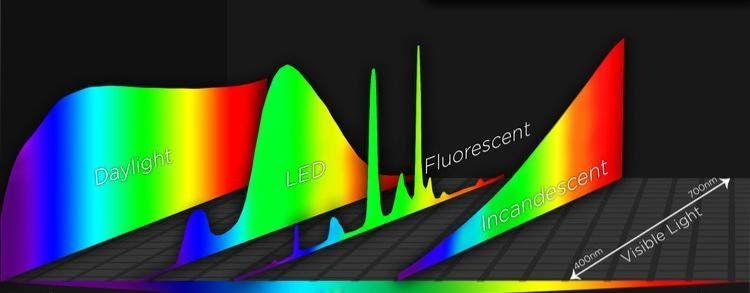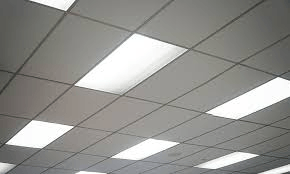Positioning Your Retail Accent Lighting
A lot goes into setting up or renovating a retail location. There are displays for merchandise, flooring, wall treatments, eye-catching artwork or promotional materials, and myriad other considerations. As we’ve discussed previously, lighting is very important to your customers’ experience and can set their expectations for your store, your inventory, and even what seem to be reasonable prices for what you’re offering.
In this previous post, we discussed different types of retail lighting. We’ve also discussed some common mistakes in retail lighting that can undo all the hard work of a renovation or establishing a new store. In this article we’ll dive a little more deeply into one of these mistakes: neglecting to properly position your accent lighting. And, more importantly, talk about how to correct that.
It’s easy to overlook something like accent lighting. Lights are one of the first things to go in when doing a build or renovation. And accent lighting should be one of the last things positioned, as it will need to be adjusted based upon the item or display it’s meant to call attention to. What follows are a few quick steps to ensure that your lighting is properly positioned.
Walkthrough
Perform a detailed walkthrough of your space. You’ll want to make sure your lighting is working as expected. Replace any burnt out bulbs and ensure any accessories that your light may be using (filters, louvers, etc.) are properly placed before proceeding.
We recommend gathering the following supplies:
- Glove or rag: if you’re using LEDs (and you should be!), you won’t have to worry about the lights being too hot, but they could be dirty, so it’s a good idea to wipe them down while you’re up there to ensure they’re burning as brightly as they should
- Ladder: so you can reach the lights you’ll be repositioning
- Notebook: to take notes when you do your objective evaluation
- Camera: to take pictures of your work to be able to recreate the look should anything change or move in the future
- Objective evaluation: It’s hard to see your store through someone else’s eyes but it’s a good and useful skill to hone not just for this exercise, but in general as you evaluate your store to ensure the customer is seeing and feeling what you’re hoping to convey. One way to help with this is to take a short walk. Get out of sight of your store and then begin walking back noticing the things around you as you approach. Sometimes it even helps to name them to yourself as you go. This exercise will prime you for when you get to your store and you’ll start to really see what you’re presenting to your potential customers and how you’re doing it.
As you approach, try to take stock of some of the following things:
- Are there any shadows on your displays
- Are things like mannequins properly lit
- Where is your eye drawn and is that where you were expecting it to go
- Keep color temperature in mind--would a given display look better with warmer or cooler colors than what you currently have in use
It may be useful to have your notebook ready at this point to make notes of any changes you’d like to make.
Continue through your store and employ the same tactics. Name what you’re looking at as you go and especially notice where your eye falls naturally as you go through the space. Consider if that’s really what you want your customers to notice. Make notes of anything that isn’t catching your eye the way you thought it would or would like it to.
Choose your fixtures
Once you’ve done your walkthrough and your evaluation and you know what displays you need to adjust, take a look at the surrounding light fixtures and choose ones that are within three to four feet of your display.
The key is moving track heads and aiming the beams of a few different fixtures to light the display from different angles. You want to highlight the display by shining the center of the beam on the merchandise you want to display while also eliminating as many shadows as possible by lighting from different angles.
Smaller objects like watches, jewelry, or figurines may benefit from being lit from directly above. Some important things to keep in mind is that you want to avoid saturating your displays and thereby distracting or blinding your customers while also avoiding steep angles as they can cause glare and shine into your customers’ eyes as they walk by.
Objective evaluation #2
While you’re up on the ladder aiming the lights, you have a different perspective than anyone on the ground. It’s best to do another objective evaluation once you finish adjusting you lighting so you can ensure you’ve created the desired effect. Once you’ve done this with each of your individual displays, repeat the objective evaluation exercise again. Take a short walk and return to your store with fresh eyes. Notice if there are any dark spots or if the right displays stand out from the rest.
It’s a good idea to take pictures of the final product to use as reference so others can replicate this after routine maintenance or if displays are moved. Displays move frequently in retail environments and your lighting should move to match them. Don’t “set it and forget it.” Move your lights with your displays and perform an objective evaluation at least once every quarter to make sure you’re keeping up with the changes in your store.
SunLake has numerous lighting options for all your retail needs. Whether you’re looking for bulbs for pendant lights, recessed cans or LED upgrades, fluorescent tube replacements, spot lights, exterior lighting, or track lighting, SunLake Lighting is your one-stop shop for all your LED lighting needs. Below are just some of our options based on application.
Track and spotlights
Accent lighting typically consists of some combination of track and spotlights. As we’ve just discussed, positioning these lights correctly is a key component of drawing your customers’ eyes to the merchandise or other accents in your store that you want to highlight. While we mostly discussed spotlights in this article, uplighting can also be used to help eliminate shadows on displays. PAR bulbs are perfect for these applications and unlike traditional bulbs won’t get hot to the touch.
Pendant lighting
Pendants can come in many forms. Those with clear glass shades or otherwise exposed bulbs look best with LED filament bulbs while those with more opaque shades will look just fine with standard non-filament lights. Depending, some pendants may look best with a globe light, it’s spherical design offsets more modern and angular fixtures very well.
Chandeliers and decorative lighting
Chandeliers and other decorative lights are common in retail shops, especially smaller boutiques or upscale shops that are focused on ambiance and customer experience. You’ll find these fixtures will benefit from B11 bulbs. Either the traditional or the vintage filament-style, depending upon the kind of fixture you have.
Recessed lighting
There are many different options for recessed lighting these days. Whether simply swapping out halogen BR bulbs for LEDs or retrofitting an integrated LED fixture into existing cans, HardWire can provide you with recommendations and do the work swapping everything out.
Fluorescent replacements
Whether you’re using fluorescent tubes for stock rooms, ambient, or cove lighting, you could be saving money on energy costs while also helping the environment by eliminating fixtures that contain harmful chemicals including mercury. 4’ T8 LED tubes that can be used to replace fluorescent tubes in existing fixtures. Shop lights that can be easily installed to provide additional lighting in back rooms, workshops, storage areas, garages, etc.





